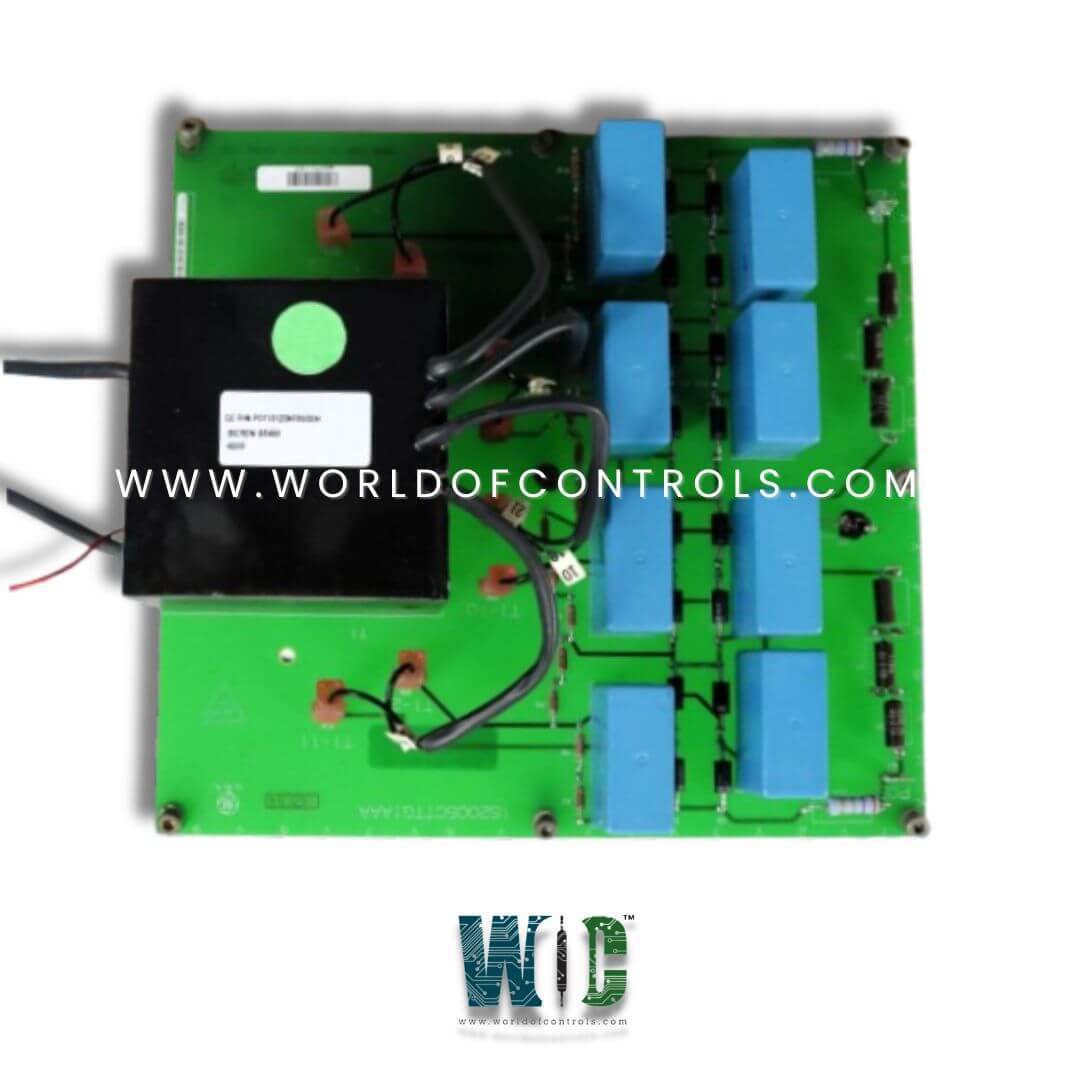SPECIFICATIONS
Part No.: IS200SCTTG1A
Manufacturer: General Electric
Country of Manufacture: United States of America (USA)
Temperature Operating: -30 to 65 o C
Product Type: Static Charge Transformer
Availability: In Stock
Series: Mark VI
Functional Description
IS200SCTTG1A is a static charge transformer developed by GE. It is a part of Mark VI control system. The static charge transformer board serves as an interface module assembly, contributing to the functionality of various components in tandem with other essential boards and equipment. This board is compatible with a standard static charge board and a gating power distribution board.
Integration
- VATF Voltage Attenuator Card: Reduces voltage levels within the system to ensure precise control over signal voltages and maintain compatibility with other components. It plays a critical role in regulating voltage levels that could impact the performance of the static charge transformer.
- SCTL Static Charger Board: Regulates charge within the system, maintaining electrical balance and preventing interference with system operation.
- CPFB Gating Power Distribution Board: Distributes power to multiple components within the control system, ensuring stable operation and proper power allocation.
- DIN-Rail (238B4952P09): Provides a standardized mounting solution within the control cabinet, ensuring secure attachment and organized placement of system components.
- 24 VDC Relays (Three Units): Facilitate switching and control of electrical circuits within the control system, ensuring proper signal routing and operational reliability.
- Relay Suppressors (Three Units): Minimize electrical noise and protect against voltage spikes resulting from relay switching, preserving signal integrity and preventing potential system damage.
Application and Usage
Integration in Innovation Series Medium Voltage AC Drives
- Primary Integration: Holds a significant role within the Innovation Series Medium Voltage AC Drives, being an essential component integrated into these systems.
- Critical Contribution: It contributes significantly to the functioning and performance of these AC drives, ensuring their proper operation and stability.
Load Cabinet Panel Assembly
- Critical Part: It forms an integral and critical part of the Load Cabinet Panel Assembly.
- Functionality within the Assembly: Within this assembly, the board contributes to the overall functionality and operation of the system, ensuring the proper functioning of the load cabinet.
- Key Role: The board's inclusion within the Load Cabinet Panel Assembly underscores its pivotal role in regulating and facilitating the necessary functions, ensuring the efficient operation of the entire system.
Functionality and Contributions
- The board's specific function lies in managing and regulating static charge transformation within the system. It handles the transformation of electrical charges, playing a pivotal role in maintaining proper voltage levels and charge distribution crucial for system stability and performance. Its intricate design and capabilities are specifically tailored to manage these functions effectively.
- The board doesn't operate in isolation; instead, it collaborates closely with associated boards and components within the system. It seamlessly integrates with voltage attenuator cards, static charger boards, gating power distribution boards, and other pertinent components. This collaborative interaction ensures a synergistic operation where each component's functionality complements and enhances the overall performance of the system.
System IONet Communication
- System IONet Communication transmits data between the Control Module and other system modules. Within this framework, the VCMI card located in the Control Module serves as the IONet bus master, directing communication through an Ethernet 10Base2 network connected to slave stations. This communication network acts as a conduit for vital information exchange, ensuring seamless coordination among different system elements.
- One of the distinctive aspects of this communication setup is the implementation of a specialized polling protocol known as Asynchronous Drives Language. This protocol significantly enhances the determinism of the IONet communication compared to traditional Ethernet LANs. By employing this protocol, the system achieves more predictable and deterministic data transmission between the Control Module and the interconnected modules, ultimately boosting the reliability and efficiency of data exchange within the system.
Mark VI Optional Genius BusTM Interface
- Available on the main processor card in Mark VI Simplex controls.
- Facilitates communication with the GE Fanuc family of remote I/O blocks.
- The selection of these blocks employs the same software configuration tools used for Mark VI I/O cards.
- Data resides in the same database, ensuring seamless integration and compatibility with the Mark VI control system.
The WOC team is always available to help you with your Mark VI requirements. For more information, please contact WOC.
Frequently Asked Questions
What is IS200SCTTG1A?
It is a static charge transformer developed by GE under Mark VI series.
What does the VCRC card offer in terms of Discrete I/O?
The VCRC card provides a total of 48 digital inputs and 24 digital outputs. These inputs and outputs are distributed across 2 Termination Boards for contact inputs and another set of 2 for relay outputs.
How is the Discrete I/O divided among the Termination Boards?
For digital inputs, they are divided across 2 Termination Boards. Similarly, for digital outputs, there are 2 Termination Boards dedicated to relay outputs.
What Analog I/O capabilities are available within the system?
The VAIC card contributes 20 analog inputs and 4 analog outputs.
